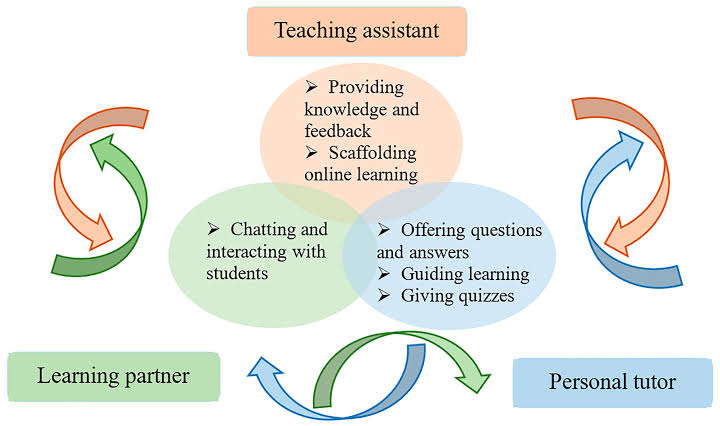How Do Multilingual Chatbots Learn New Languages? Unveiling the Language Acquisition Process

Contents
- 1 Introduction
- 2 How Do Multilingual Chatbots Learn New Languages?
- 3 Understanding the Basics
- 4 Data Collection
- 5 Natural Language Processing (NLP)
- 6 Cross-Language Analysis
- 7 Training with Neural Networks
- 8 Interactive Learning
- 9 Feedback Mechanisms
- 10 Continuous Evolution
- 11 FAQs about Multilingual Chatbots and Language Learning
- 12 Conclusion
Introduction
In the ever-evolving world of artificial intelligence (AI), multilingual chatbots have emerged as a remarkable innovation. These digital conversational agents have the ability to communicate fluently in multiple languages, making them invaluable in today’s globalized landscape. But have you ever wondered, “How do multilingual chatbots learn new languages?” In this comprehensive article, we’ll delve deep into this intriguing topic. From the fundamental principles to advanced language acquisition techniques, we’ll explore the fascinating journey of chatbots becoming multilingual. So, let’s embark on this enlightening journey and unravel the secrets behind multilingual chatbots.
How Do Multilingual Chatbots Learn New Languages?
Multilingual chatbots, just like humans, undergo a process of language acquisition. However, their approach is vastly different and tailored to the digital realm. Here’s a step-by-step breakdown of how these AI-driven marvels master new languages:
Understanding the Basics
Language acquisition begins with a strong foundation in the Chatbot‘s primary language. This language serves as the reference point from which it expands into other languages. A solid grasp of grammar, vocabulary, and syntax is essential.
Data Collection
Chatbots gather vast amounts of linguistic data from various sources. They scour the internet for text, conversations, and literature in the target language. This data forms the corpus, a comprehensive dataset that the chatbot uses for learning.
Natural Language Processing (NLP)
NLP is the backbone of multilingual chatbots. It allows them to analyze and understand human language. Using algorithms and machine learning, chatbots break down sentences, identify patterns, and extract meaning.
Cross-Language Analysis
To bridge the gap between languages, chatbots conduct cross-language analysis. They compare structures, idioms, and expressions across different languages to find commonalities and differences.
Training with Neural Networks
Neural networks play a pivotal role in language acquisition. Chatbots utilize these networks to simulate the human brain’s learning process. They adjust weights and connections to improve language skills continually.
Interactive Learning
Multilingual chatbots engage in interactive learning by conversing with native speakers or language experts. This real-time interaction helps them refine pronunciation, intonation, and cultural nuances.
Feedback Mechanisms
Feedback loops are crucial for improvement. Chatbots incorporate user feedback to rectify errors and enhance their language proficiency.
Continuous Evolution
Language is dynamic, and so is language acquisition for chatbots. They constantly update their knowledge by monitoring language trends, colloquialisms, and new vocabulary.
FAQs about Multilingual Chatbots and Language Learning
Q: Can multilingual chatbots learn any language? A: Multilingual chatbots can theoretically learn any language for which there is sufficient linguistic data. However, the quality and quantity of data play a vital role in determining their proficiency.
Q: Do chatbots have accents when speaking different languages? A: Chatbots can mimic accents if desired, but they are generally programmed to speak with a neutral accent to ensure clarity and comprehensibility.
Q: How long does it take for a chatbot to become proficient in a new language? A: The time required varies depending on the complexity of the language and the amount of data available. It can range from a few weeks to several months.
Q: Are chatbots capable of understanding slang and regional dialects? A: Yes, chatbots are designed to understand slang and regional dialects, thanks to their extensive data analysis capabilities.
Q: What is the role of machine translation in chatbot language acquisition? A: Machine translation assists chatbots in understanding and generating text in different languages. It acts as a valuable tool in their multilingual capabilities.
Q: Can chatbots forget languages they’ve learned? A: Chatbots do not forget languages they’ve learned unless specifically instructed to do so. They can retain proficiency in multiple languages simultaneously.
Conclusion
Multilingual chatbots represent a remarkable fusion of language and technology. Their ability to learn and communicate in diverse languages is a testament to the incredible advancements in AI. From mastering the basics to harnessing the power of neural networks, chatbots embark on an exciting journey to become multilingual. As they continue to evolve, these digital conversational agents are poised to play an even more significant role in our interconnected world.
In conclusion, “How do multilingual chatbots learn new languages?” is a question answered through a combination of data, algorithms, and interactive learning. As we witness the ongoing growth of AI, the capabilities of chatbots will only expand, bringing us closer to a world where language is no longer a barrier but a bridge to global communication.





